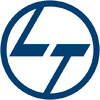Filter interviews by
J. Kumar Infraprojects Civil Foreman Interview Questions and Answers
10 Interview questions
Improving formwork systems enhances efficiency, safety, and quality in construction projects.
Utilize modular formwork systems for faster assembly and disassembly, reducing labor costs.
Implement advanced materials like aluminum or plastic to decrease weight and increase durability.
Incorporate digital technologies such as BIM for precise planning and coordination.
Regularly train workers on best practices and safety ...
Improving formwork can enhance efficiency, safety, and quality in construction projects, leading to better outcomes and reduced costs.
Implement modular formwork systems for quicker assembly and disassembly, reducing labor time.
Use advanced materials like aluminum or plastic for lightweight and durable formwork, improving handling and longevity.
Incorporate digital tools for precise measurements and designs, minimiz...
Working at heights requires proper safety measures and equipment.
Use appropriate safety harnesses and fall protection systems.
Ensure scaffolding and ladders are secure and stable.
Follow safety guidelines and regulations.
Provide proper training to workers on working at heights.
Regularly inspect and maintain equipment and tools.
Implement safety barriers and guardrails.
Use aerial lifts or platforms for safe access to...
I behave as a civil engineer by being professional, organized, and detail-oriented.
I maintain a professional demeanor at all times, treating colleagues and clients with respect.
I am organized in my work, keeping track of project timelines, budgets, and resources.
I pay attention to details, ensuring accuracy in calculations, measurements, and documentation.
I communicate effectively with team members, subcontractors...
To calculate zone A, zone B, and zone C, you need to know the total area and the dimensions of each zone.
Determine the total area of the site
Calculate the area of zone A by subtracting the combined area of zones B and C from the total area
Calculate the area of zone B using the given dimension
Calculate the area of zone C by subtracting the area of zone B from the total area
Ensure the units of measurement are consis...
BBS in construction stands for Bar Bending Schedule.
BBS is a document that provides details about the reinforcement steel bars used in a construction project.
It includes information about the size, shape, quantity, and placement of the bars.
BBS helps in estimating the required amount of steel, planning the cutting and bending of bars, and ensuring proper reinforcement in the structure.
Example: BBS for a column may...
Mix ratio M 25 is a concrete mix design that consists of 1 part cement, 1 part fine aggregate, and 2 parts coarse aggregate.
M 25 mix ratio is commonly used in construction for structural applications.
The mix ratio represents the proportions of different materials used in the concrete mix.
For M 25, the ratio is 1:1:2, which means 1 part cement, 1 part fine aggregate (sand), and 2 parts coarse aggregate (stone chips...
The number of zones in a u grider varies depending on the specific design and requirements.
The number of zones in a u grider can range from 1 to multiple zones.
Zones are typically created to divide the grider into sections for better load distribution and structural stability.
The number of zones may be determined by factors such as the length and span of the grider, the load it needs to support, and the design spe...
The pour sequence refers to the order in which concrete is poured into formwork during construction.
The pour sequence is determined based on the design requirements, structural considerations, and weather conditions.
It is important to follow the pour sequence to ensure proper curing and strength of the concrete.
For example, in a multi-story building construction, the pour sequence may start from the bottom floors ...
U-girder is a type of precast concrete girder used in bridge construction.
U-girders are shaped like the letter 'U' and are commonly used in bridge projects.
They are precast off-site and transported to the construction site for installation.
U-girders provide structural support and are often used in combination with other bridge components.
They are designed to distribute the load of the bridge deck and traffic to th...
J. Kumar Infraprojects Civil Foreman Interview Experiences
4 interviews found
I appeared for an interview in Feb 2025, where I was asked the following questions.
- Q1. How we can improve our formwork system?
- Ans.
Improving formwork systems enhances efficiency, safety, and quality in construction projects.
Utilize modular formwork systems for faster assembly and disassembly, reducing labor costs.
Implement advanced materials like aluminum or plastic to decrease weight and increase durability.
Incorporate digital technologies such as BIM for precise planning and coordination.
Regularly train workers on best practices and safety measu...
- Q2. If i give a chance of you ,One thing what you can do about formwork for improve?
- Ans.
Improving formwork can enhance efficiency, safety, and quality in construction projects, leading to better outcomes and reduced costs.
Implement modular formwork systems for quicker assembly and disassembly, reducing labor time.
Use advanced materials like aluminum or plastic for lightweight and durable formwork, improving handling and longevity.
Incorporate digital tools for precise measurements and designs, minimizing e...
I applied via Walk-in and was interviewed in Dec 2023. There was 1 interview round.
(6 Questions)
- Q1. What BBS in contraction
- Ans. Bar banding shedule
- Q2. What is mix ratio M 25
- Ans. Mix ratio, 1 cement, 1 sand, 2 Agreecate
- Q3. How many zone in u grider
- Ans.
The number of zones in a u grider varies depending on the specific design and requirements.
The number of zones in a u grider can range from 1 to multiple zones.
Zones are typically created to divide the grider into sections for better load distribution and structural stability.
The number of zones may be determined by factors such as the length and span of the grider, the load it needs to support, and the design specific...
- Q4. How calculate zone Azone 3,700m B zone 1000ma& C zone remaining in center
- Ans.
To calculate zone A, zone B, and zone C, you need to know the total area and the dimensions of each zone.
Determine the total area of the site
Calculate the area of zone A by subtracting the combined area of zones B and C from the total area
Calculate the area of zone B using the given dimension
Calculate the area of zone C by subtracting the area of zone B from the total area
Ensure the units of measurement are consistent ...
- Q5. How can work in hight
- Ans. With seftey hurness
- Q6. How u bihev ur Engeniar
- Ans.
I behave as a civil engineer by being professional, organized, and detail-oriented.
I maintain a professional demeanor at all times, treating colleagues and clients with respect.
I am organized in my work, keeping track of project timelines, budgets, and resources.
I pay attention to details, ensuring accuracy in calculations, measurements, and documentation.
I communicate effectively with team members, subcontractors, and...
Interview Preparation Tips
Skills evaluated in this interview
I applied via Walk-in and was interviewed before Aug 2022. There were 4 interview rounds.

(3 Questions)
- Q1. It was all About structural question
- Q2. What do know about ugirder
- Q3. What is the pour sequence
- Ans.
The pour sequence refers to the order in which concrete is poured into formwork during construction.
The pour sequence is determined based on the design requirements, structural considerations, and weather conditions.
It is important to follow the pour sequence to ensure proper curing and strength of the concrete.
For example, in a multi-story building construction, the pour sequence may start from the bottom floors and w...
(1 Question)
- Q1. It was all about structural question
(1 Question)
- Q1. What do you know about U-girder
- Ans.
U-girder is a type of precast concrete girder used in bridge construction.
U-girders are shaped like the letter 'U' and are commonly used in bridge projects.
They are precast off-site and transported to the construction site for installation.
U-girders provide structural support and are often used in combination with other bridge components.
They are designed to distribute the load of the bridge deck and traffic to the bri...
Interview Preparation Tips
I applied via Walk-in and was interviewed before Sep 2020. There was 1 interview round.
Interview Questionnaire
1 Question
- Q1. How do you get work from workers?
Interview Preparation Tips
Top trending discussions






Interview questions from similar companies

Civil Foreman Interview Questions & Answers
Nagarjuna Construction Companyposted on 15 Jul 2017
I appeared for an interview in May 2018.
Interview Questionnaire
7 Questions
- Q1. Only construction line
- Q2. Only my job
- Q3. What type of your job
- Q4. How much mm in 1"
- Q5. How much mm in 1mtr
- Ans.
There are 1000 millimeters in 1 meter.
1 meter is equal to 1000 millimeters.
The conversion factor from meters to millimeters is 1000.
To convert meters to millimeters, multiply the length in meters by 1000.
- Q6. Construction line
- Q7. Technical field
Interview Preparation Tips
Experience: Civil foreman
General Tips: Good
Duration: 1-4 weeks

I appeared for an interview before Feb 2021.

12th
Interview Preparation Tips

Civil Foreman Interview Questions & Answers
Kalpataru Projects Internationalposted on 10 Mar 2021
Interview Questionnaire
11 Questions
- Q1. Am civil service. I required job
- Q2. Required job
- Q3. Civil foreman job equired
- Q4. I am civil foreman
- Q5. Get you job
- Q6. I am interested in jmc
- Q7. Get job
- Q8. Required for job
- Q9. Job requirements
- Q10. I am interested job
- Q11. Please refer

I applied via Walk-in and was interviewed in Sep 2021. There were 2 interview rounds.

What is super structure and what is substrate
Type of piles
Asked about BBS
Also asked cement grade
What is clear cover provide superstructure and substructure. Etc
Interview Preparation Tips
- Suggest you from my side follow also
Time management are very important
Do good behaviour with everyone
Always be positive

I applied via Company Website and was interviewed in Nov 2021. There were 3 interview rounds.
Interview Questionnaire
1 Question
- Q1. Sariya setting
Interview Preparation Tips

Interview Questionnaire
3 Questions
- Q1. Road me civil structural engineering
- Q2. Road civil structural
- Q3. Sheet piling
Interview Preparation Tips
J. Kumar Infraprojects Interview FAQs
Tell us how to improve this page.
J. Kumar Infraprojects Interviews By Designations
- J. Kumar Infraprojects Civil Engineer Interview Questions
- J. Kumar Infraprojects Civil Foreman Interview Questions
- J. Kumar Infraprojects Senior Engineer Interview Questions
- J. Kumar Infraprojects QA QC Engineer Interview Questions
- J. Kumar Infraprojects Safety Officer Interview Questions
- J. Kumar Infraprojects Safety Supervisor Interview Questions
- J. Kumar Infraprojects Asst Store Interview Questions
- J. Kumar Infraprojects Quality Engineer Interview Questions
- Show more
Interview Questions for Popular Designations
Overall Interview Experience Rating
based on 4 interview experiences
Difficulty level
Duration
Interview Questions from Similar Companies
J. Kumar Infraprojects Civil Foreman Reviews and Ratings
based on 9 reviews
Rating in categories
|
Junior Engineer
181
salaries
| ₹1.8 L/yr - ₹5.5 L/yr |
|
Civil Engineer
155
salaries
| ₹2.5 L/yr - ₹7.6 L/yr |
|
Senior Engineer
149
salaries
| ₹4.8 L/yr - ₹11.2 L/yr |
|
Civil Site Engineer
144
salaries
| ₹2.4 L/yr - ₹6.6 L/yr |
|
Engineer
118
salaries
| ₹3.6 L/yr - ₹7.7 L/yr |

Larsen & Toubro Limited

L&T Construction

Tata Projects

Kalpataru Projects International
- Home >
- Interviews >
- J. Kumar Infraprojects Interview Questions














